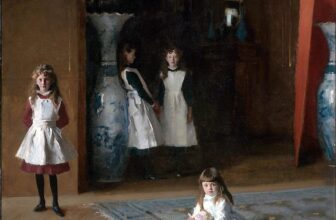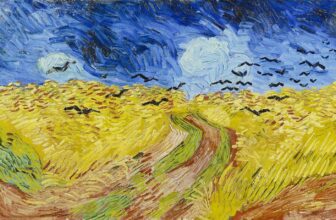Unveiling La Belle Ferronnière Painting
The Muse Behind La Belle Ferronniere
In the heart of Paris, inside the opulent walls of the Louvre Museum, there hangs a portrait so enigmatic that it has sparked centuries of debate, admiration, and curiosity. Her gaze is poised and intelligent, her attire elegant yet simple, and her presence commands a quiet power. She is La Belle Ferronnière,a woman painted with such precision and mystery that even today, scholars and art lovers find themselves captivated.
But who painted her? Who was she? Why is she called La Belle Ferronnière? What secrets lie behind her timeless stare?
To uncover the answers, we must step back into the cultural splendor and political intrigue of the Italian Renaissance and journey through the corridors of art history, scandal, and royal obsession.
Who Painted La Belle Ferronnière
The official attribution of La Belle Ferronnière goes to Leonardo da Vinci, the legendary Italian polymath of the Renaissance. However, like many of the greatest masterpieces in art history, this attribution has not come without controversy.
The painting is widely believed to have been completed between 1490 and 1496, during Leonardo’s years in Milan at the court of Ludovico Sforza, also known as Ludovico il Moro. This was the same fertile period when Leonardo worked on other iconic works such as The Last Supper and Lady with an Ermine.
But here’s where it gets complicated.
Some scholars argue that La Belle Ferronnière may not have been painted by Leonardo himself but by an artist from his workshop, possibly Giovanni Antonio Boltraffio or Bernardino de’ Conti, both talented pupils of the master. The painting’s refined technique, subtle use of sfumato (the soft, smoky transitions of tone), and psychological depth echo Leonardo’s hand, but subtle differences in brushwork and anatomy have led some experts to question the sole authorship.
Nonetheless, the majority consensus remains that Leonardo either painted it himself or was deeply involved in its creation.
The Identity of the Woman: Who Is La Belle Ferronnière
The title La Belle Ferronnière was not the original name given to the portrait, it’s a label that came later, inspired by the jewel worn by the sitter.
For centuries, people believed the painting depicted Lucrezia Crivelli, a mistress of Ludovico Sforza. This identification would place the portrait alongside Leonardo’s Lady with an Ermine, believed to portray Cecilia Gallerani, another of Ludovico’s lovers.
But then the name La Belle Ferronnière enters the scene,and with it, a cloud of intrigue.
The term “ferronnière” comes from a type of headband that was fashionable during the Renaissance,a narrow band with a jewel at the center, worn across the forehead. The woman in the painting wears one, hence the title. But the name also draws from a legendary mistress of King Francis I of France, known only as La Belle Ferronnière, who was rumored to be the wife of a Parisian ironmonger (ferronnier in French). The king allegedly fell in love with her and made her his mistress.
It was later said that when the king contracted syphilis, the woman transmitted it to him, possibly as an act of revenge or betrayal. Some even claimed she purposely passed the disease on to punish the king for seducing her.
While these tales are more myth than fact, they added a scandalous allure to the painting’s title, creating an air of mystery that helped it endure in popular imagination.
So, Who Was She, Really
The truth? Unknown.
She could be Lucrezia Crivelli. She could be an idealized beauty, a composite of Leonardo’s imagination. Or perhaps a noblewoman whose identity has simply been lost to time. And that’s part of the painting’s allure: the mystery is as much a feature of the portrait as the woman herself.
What Is the Meaning of La Belle Ferronnière
At first glance, La Belle Ferronnière appears to be a standard portrait of a Renaissance lady, yet it holds deeper symbolic meaning.
The composition is strikingly direct. The woman stares with unwavering confidence, her eyes meeting the viewer’s with a sense of awareness rare in portraits of that era. Her pose is static but commanding, her dress opulent yet modest, suggesting a woman of noble station or courtly association.
But it’s the headband,the ferronnière,that draws the eye.
In Renaissance iconography, jewelry and attire often carried symbolic weight. The central jewel in her headband, positioned on her forehead, could signify intellect or status. Her understated smile, a faint, knowing expression,foreshadows Leonardo’s later masterpiece, the Mona Lisa.
Some historians interpret the woman’s expression as a reflection of moral ambiguity, a theme Leonardo was known to explore. Is she a seductress or a victim? A noble consort or a pawn in courtly games? The ambiguity of her identity opens the painting to endless interpretation, each as valid as the last.
How Much Is La Belle Ferronnière Worth
Putting a price tag on a work like La Belle Ferronnière is like trying to appraise the value of history itself. As an artwork attributed to Leonardo da Vinci,arguably the most celebrated painter in Western history,the painting is virtually priceless.
However, for context, let’s consider this: Leonardo’s Salvator Mundi, a lesser-known and highly debated work, sold in 2017 for $450.3 million, making it the most expensive painting ever sold at auction.
If La Belle Ferronnière were ever to go on sale (which it won’t, being a national treasure of France), it could easily command a similar price, if not more, due to its prominence, provenance, and condition.
Art market insiders often suggest that if the Louvre ever auctioned off its Leonardo holdings,which include both La Belle Ferronnière and the Mona Lisa,they would individually fetch prices that would dwarf even the most extravagant sales in history.
In short: La Belle Ferronnière is worth hundreds of millions, both in terms of monetary value and historical significance.
Where Is La Belle Ferronnière Located
Today, La Belle Ferronnière is housed in the Louvre Museum in Paris, France. It hangs among the masterworks of the Italian Renaissance in the Denon Wing, just steps away from the crowds that gather daily to gaze at the Mona Lisa.
But while Mona Lisa often steals the spotlight, La Belle Ferronnière remains one of the Louvre’s hidden treasures, a quieter, more intimate experience for those who stumble upon her.
Her frame is gilded, her colors preserved with remarkable vibrancy, and her presence remains magnetic. There is something unshakably modern in her demeanor, something timeless in her gaze.
To stand before La Belle Ferronnière is to step into a portal between the past and present,a moment frozen in time by the genius of Leonardo and the unknowable story of the woman who sat before him.
A Timeless Enigma
In the end, the appeal of La Belle Ferronnière lies not only in its painterly brilliance but in its enduring mystery.
Like all great art, the painting refuses to answer definitively. It invites speculation, admiration, and connection. It has survived wars, political shifts, and centuries of scrutiny, and it continues to speak to us today, quietly but insistently.
She may not smile as famously as the Mona Lisa, but La Belle Ferronnière captivates in her own way. With every glance, she dares us to look deeper, not just into her portrait, but into the ways we interpret beauty, identity, and history.
La Belle Ferronnière is more than a painting; it’s a conversation between artist and muse, past and present, mystery and mastery. Whether or not Leonardo da Vinci painted her with his own hand, his spirit, his curiosity, his genius, undoubtedly lives in the canvas.
And as long as she hangs in the Louvre, she will continue to provoke that same eternal question: Who is the woman behind the gaze?




